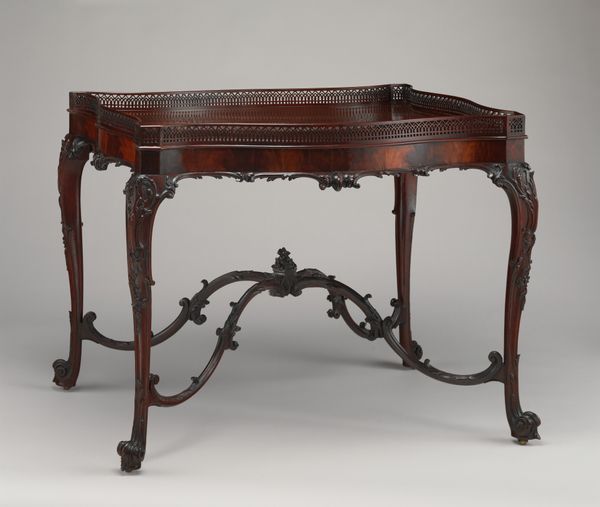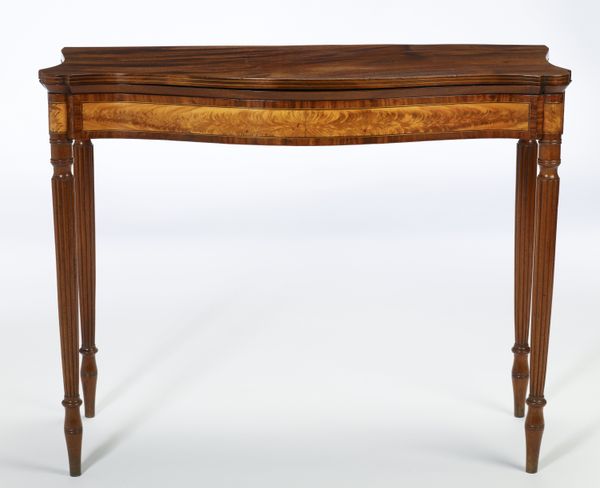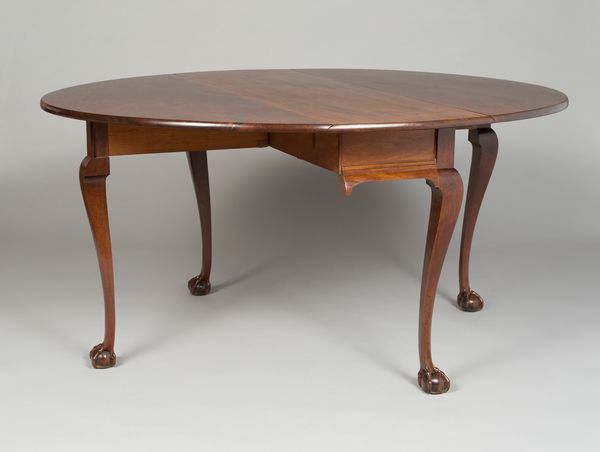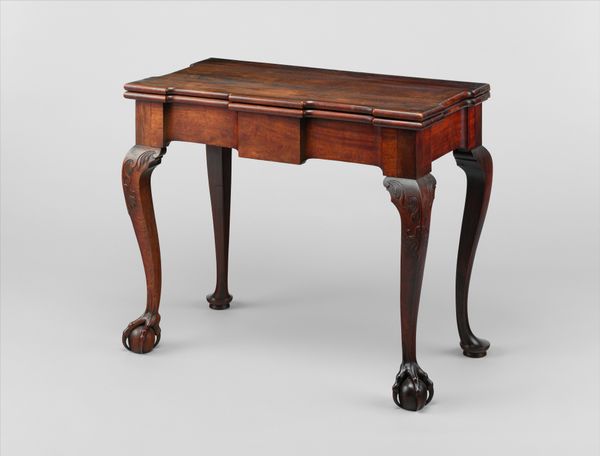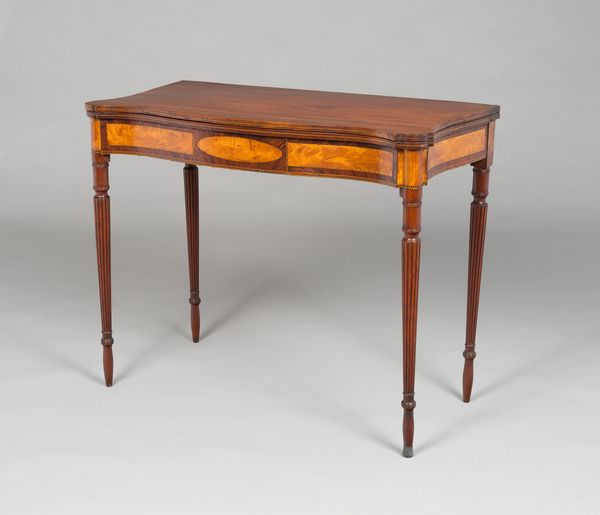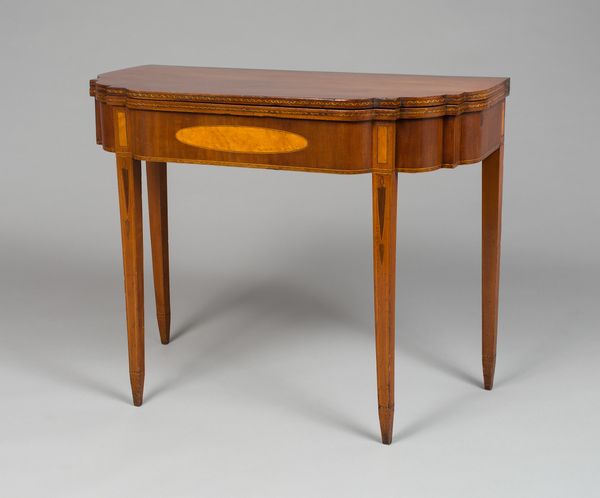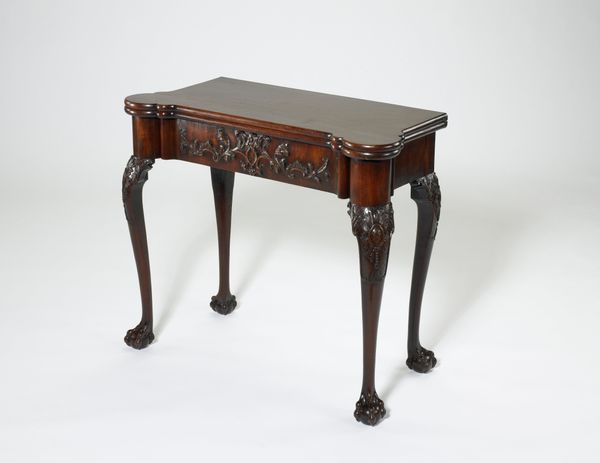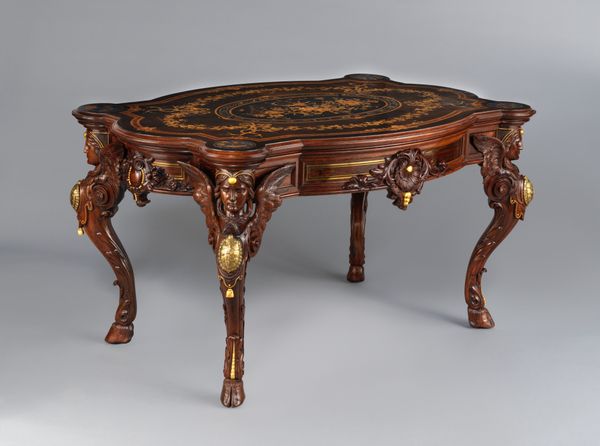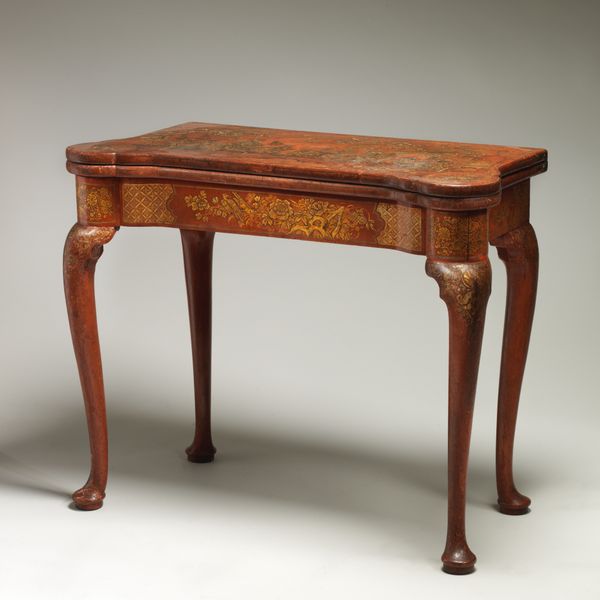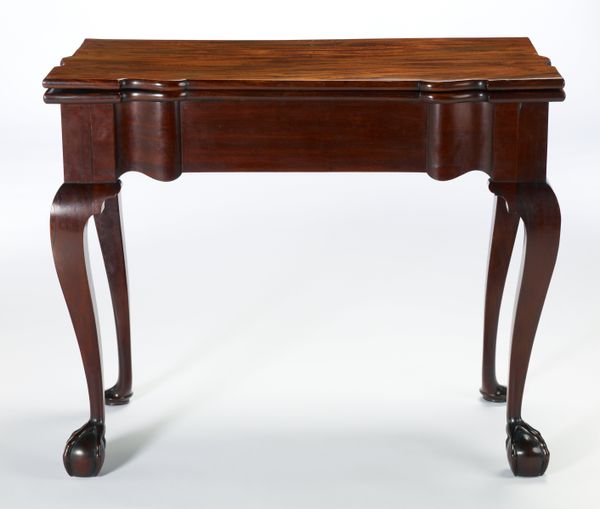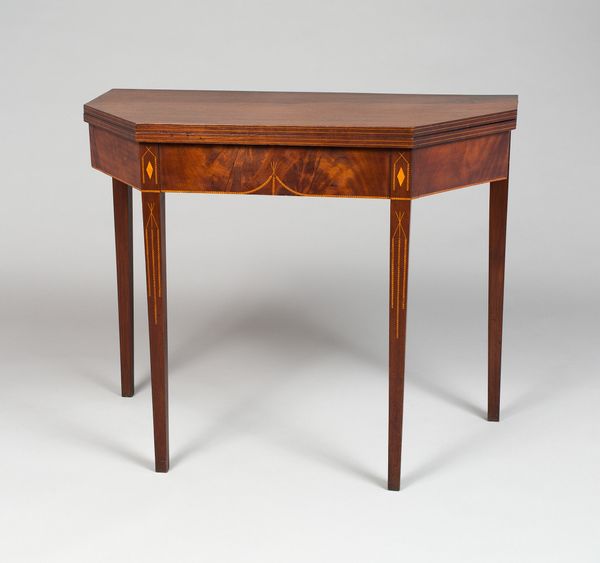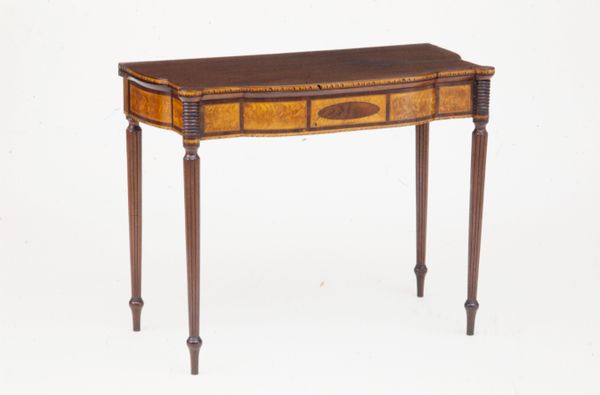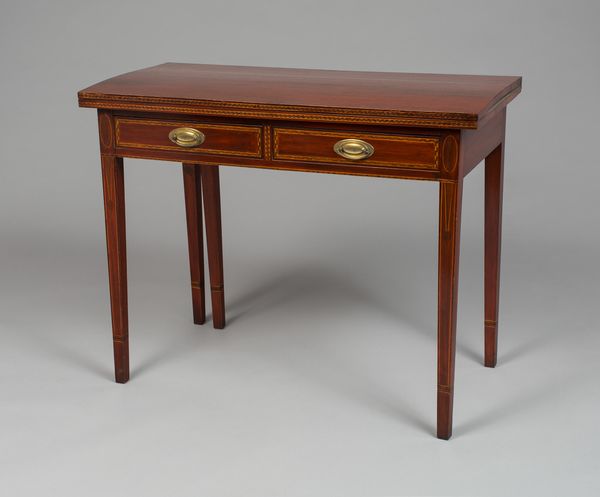
sculpture, wood
#
neoclacissism
#
furniture
#
sculpture
#
wood
#
decorative-art
Dimensions: Overall: 34 7/8 × 55 5/8 × 22 1/2 in. (88.6 × 141.3 × 57.1 cm)
Copyright: Public Domain
Curator: Standing before us is a “Side table”, a remarkable example of Neoclassical decorative art, crafted from wood by Robert Adam between 1775 and 1785. It currently resides here at the Metropolitan Museum of Art. Editor: It has that old money vibe, doesn't it? Sober and elegant with restrained embellishments, kind of whispers about stately homes and powdered wigs. Curator: Indeed. The formal restraint you observe speaks directly to Neoclassical principles. Note the semi-circular form and the fluted frieze; observe how the carved detailing, mimicking classical motifs like acanthus leaves, is employed. The geometry speaks to a broader intellectual movement. Editor: All the carved details feel meticulously thought out and perfectly placed, almost like mathematical poetry etched into the dark wood. It makes me wonder if there were hidden symbols known to only a few…like some 18th-century secret society coffee table! Curator: Perhaps not that dramatic, but your impulse is interesting. Robert Adam was heavily invested in architectural and design theory. The symmetry and proportion, as well as the classical motifs, signal his intellectual engagement. Look closely at how the legs taper downward. That subtle, intentional diminution conveys lightness. Editor: I notice that, despite its somewhat imposing presence, the delicate legs really keep it from looking clunky. There’s almost a sense of gravity defiance at play; it simultaneously holds its ground, and appears weightless. I am fascinated with furniture. It says a lot about our human condition and desire for functionality as well as beauty. Curator: Precisely. This side table presents not merely functional furniture, but an object of intellectual contemplation. Its physical presence invites considerations about design principles and historical context. It encourages us to explore the philosophical currents that shaped its creation. Editor: Yeah, it really bridges craftsmanship and concept. Staring at it, you not only think of who owned this and in what space it existed, but of larger concepts such as societal order. Now every time I see something similar, I'm gonna look closer, think deeper… It is more than just furniture, isn’t it? Curator: I concur; Adam's work stands as a testament to the power of design to embody complex ideas, offering us now avenues for richer analysis and thoughtful discourse.
Comments
No comments
Be the first to comment and join the conversation on the ultimate creative platform.
